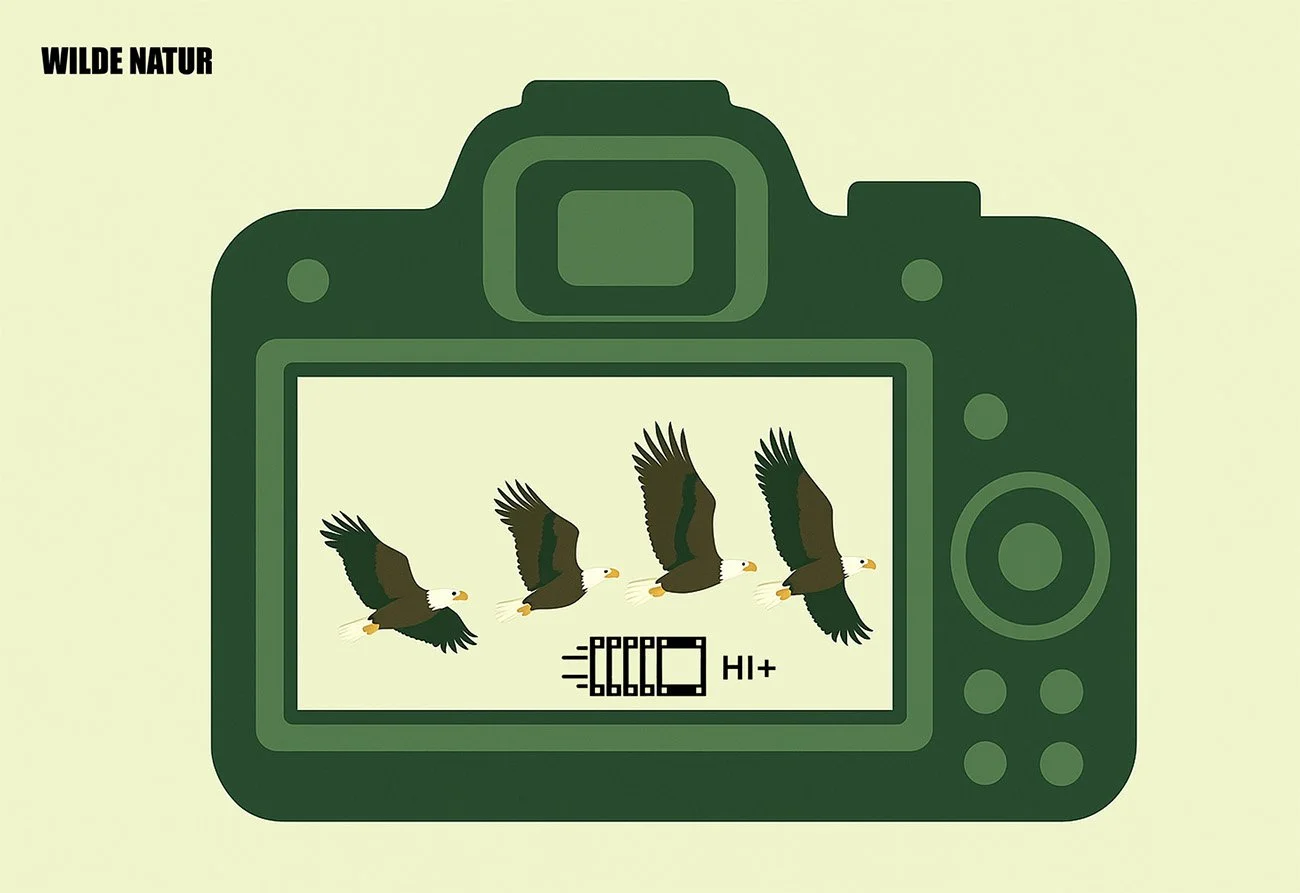Using the Right Shooting Angle for Impressive Wildlife Photos
Follow & share WildeNatur:
Why the Shooting Angle Matters
The angle you choose to photograph from has a major impact on how your image is perceived. It can create a sense of closeness, enhance emotion, or make your subject appear distant and weak. Especially in wildlife photography, the right perspective often makes the difference between wow and meh.
How to Use Angles Effectively
1. Shoot at Eye Level
An image taken at eye level feels more natural and intimate – almost as if you're looking the animal straight in the eye.
Tip:
Crouch down or lie flat on the ground. This is especially worthwhile for small animals – and the background often appears softer and calmer due to the increased distance behind the subject.
2. Low Angle for More Presence
When you shoot from below, the animal appears larger and more dignified.
Example:
A deer photographed from ground level is more likely to look like the king of the forest than one captured from above.
3. Slightly from Above – When It Makes Sense
Sometimes the animal is lying on the ground, but a low angle isn’t possible due to tall vegetation. Or the background may be blown out, and the contrast between green grass and a bright white or grey sky makes the image look chaotic. In these cases, a slightly elevated angle can be the better choice.
4. Choose Your Perspective Intentionally
- Side view: Great for showing motion, posture, or stride
- Frontal: Direct and intense – perfect for emotional portraits
- Diagonal: Adds spatial depth and visual tension to the image
Common Mistakes – and How to Avoid Them
1. Shooting from Above (Unintentionally)
This creates distance and makes the animal appear small and insignificant – especially in the case of smaller species.
2. Distracting Backgrounds
Fences, branches, or people in the background can ruin the atmosphere. Often, one step to the side is all it takes to save the shot.
3. Uncontrolled Backlighting
Backlight can be atmospheric – but only if you manage it well. Otherwise, you’ll get harsh shadows or blown-out highlights with no detail.
In a Nutshell: The Shooting Angle Is Your Creative Tool
A great wildlife photo is rarely just luck – it's usually the result of an intentional choice of perspective. Use angles to create closeness, emotion, and depth. Even small changes in your position can have a big impact on the final image.







